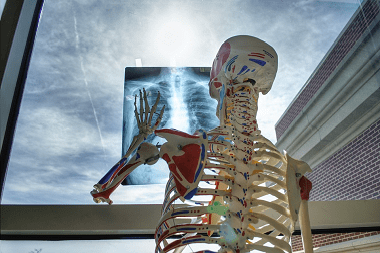Interesting >>>> Augmented reality in medicine
Augmented reality in medicine.

With the advent of digital devices and the development of artificial intelligence, an industry such as medicine has the opportunity to use visible, visually perceived things, with additional, selected and computer-processed accompaniments (text, graphics, animation, video, etc.). This technology is called augmented reality. For example, a video camera is aimed at an object of medical research, which is in its field of view, and a specialist on the screen sees not only this object, but also additional information about it, for example, internal structure (anatomy), information note, the result of the current examination, or something else.
Augmented reality in medicine provides an invaluable service to both the medical specialist and the student.
During laparoscopic operations, which are virtually invisible to the doctor, on the monitor, in addition to viewing the area of action of the surgeon, a general or specific picture of the results of the operation, or information about the state of the body (pressure, blood flow rate, blood chemistry, etc.) may appear.
When carrying out complex operations that require the advice of experienced specialists who are not always nearby, digital devices have been created that make it possible to virtually impose the hands of a surgeon who is at a distance on the hands of a working surgeon, and thus adjust the course of the operation.
Medical students can use gadgets that allow, when hovering over an organ, to see its anatomical structure.
When searching for veins for collecting blood, doctors do not always manage to get into the right vein the first time. For this, a scanner was invented, which, when aiming at a limb, reproduces the venous lines and thereby specifies exactly where the needle should be inserted. Of course, the computer actually draws a picture of the location of the veins, the health worker is guided by it.
Augmented reality has been especially successfully implemented on devices for people with virtually no vision. For their residual ability to distinguish at least some objects, an additional drawing (clarification) of these objects was invented, which allowed them to see clearer contours of their environment.
Augmented reality actually allows you to see in real time what is not immediately available to the eye.

Read

Read



























